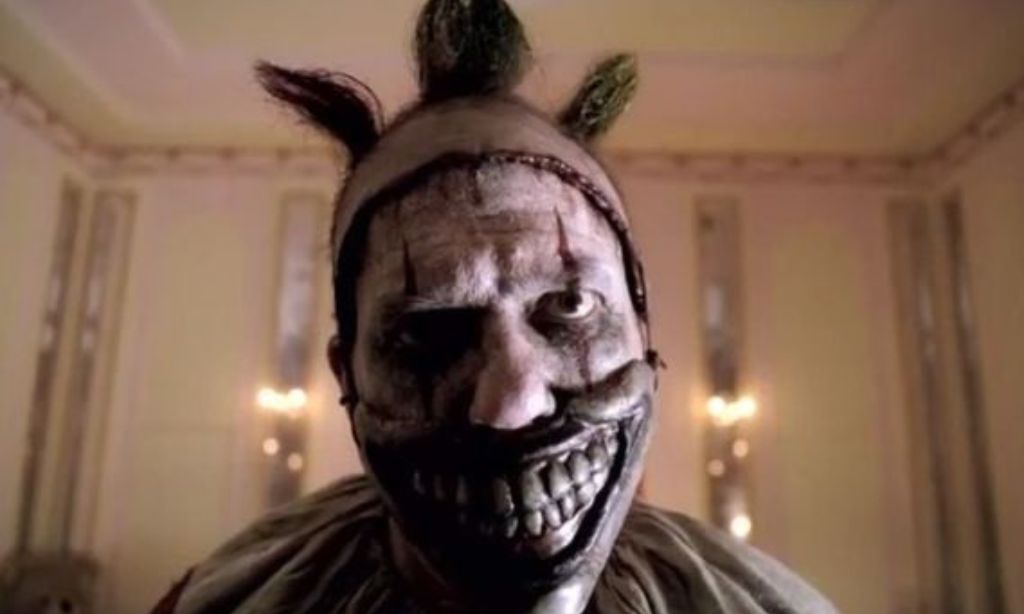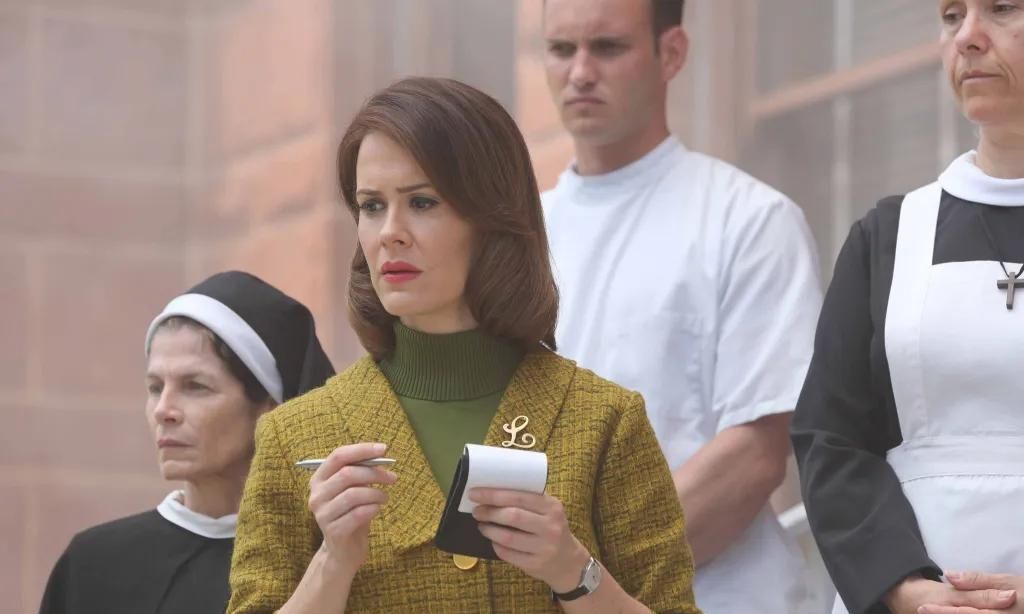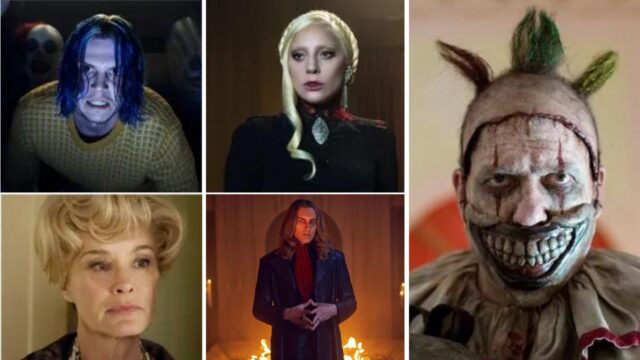A fresh season of “American Horror Story” is still the best bet on television.
Every season, the FX anthology series delights in unleashing a twisted new nightmare that introduces its cast of familiar people to whatever new torment lies. For fans, returning each year for the promise of something new challenges “AHS” to do its worst – and sometimes it does. Even still, it’s difficult to say no to another taste.
When creators Ryan Murphy and Brad Falchuk unveiled the first season of the program, now known as “Murder House,” in 2011, it was a game changer. That first season was a crazy and innovative mashup of horror, Hollywood, and history — don’t forget Dylan McDermott sobbed while masturbating within the first hour. It drew the legendary Jessica Lange to television and let her run wild as several personas for four seasons, while also allowing Connie Britton to muddy up her reputation as TV’s best parent, aka Tami Taylor from “Friday Night Lights.”
However, the option to start over with a new story each season has always been “American Horror Story’s” most terrifying gamble. It paid off in terms of generating enough goodwill and cyclical curiosity to keep audiences interested for a further ten seasons and counting, each one anchored by a stalwart stable of stars including Lange, Sarah Paulson, Evan Peters, Kathy Bates, Francis Conroy, Lily Rabe, Angela Bassett, Billie Lourd, Emma Roberts, Leslie Grossman, and Denis O’Hare.
The series may no longer be the cultural cornerstone it once was, but the obvious excitement of that seasonal leap into the unknown remains. With “American Horror Story: Delicate” premiering this fall as the franchise’s 12th installment, here’s how the prior 11 seasons of “AHS” rank, from worst to best.
11. Double Feature (Season 10, 2021)
“AHS” has struggled with its own worst impulse to cover too many ideas at once from its inception. Some mashups are inspired, while others simply “Double Feature.” This season at least had the decency to split its ideas into two distinct halves: “Red Tide,” a vampire/opioid cautionary tale about the soul-sucking cost of creativity in off-season Provincetown, and “Death Valley,” a time-hopping alien story that would perplex even Mulder and Scully. The latter is the type of perplexing dud that has led the series to lose viewers in previous years. After missing Season 9, Paulson reprises her role as an immortal Mamie Eisenhower, while Rabe portrays an alien-abducted Amelia Earhart in some of the show’s more bizarre revisionist history. In addition, there’s a subplot about two guys bringing alien babies to full (graphic) term. None of it worked, and believe it or not, this was the season’s shorter half. The two-for-one offer simply sucked the life out of the audience, whether through teeth or extraterrestrial probes.
10. NYC (Season 11, 2022)

This season’s promotional materials leaned heavily on blood imagery, causing some to fear it may touch on the terrible growth of AIDS – and it did, in a manner. But, of course, it did so in the “AHS” fashion. Enter a serial killer who orders a Mai Tai before dismembering his victims, as well as a voyage through the city’s seductive BDSM subculture and a monstrous leather-and-harness-bound angel/harbinger of death. When Patti LuPone appears as a bathhouse cabaret performer, the only reasonable response is “Why not?” Perhaps the most genuine terror presented by the program to date — the queer community being abandoned by medics and law police to die at the hands of an unseen killer, or very human ones — “NYC” could have benefited from a bit more nuance. If viewers want to learn the true story of the terror that afflicted New York’s gay community in the late 1980s and early 1990s, they should watch HBO’s summer 2023 docuseries “Last Call: When a Serial Killer Stalked Queer New York” for infuriating context on the lack of police action and the rise of organizations like the Anti-Violence Project. “AHS: NYC” just touches the surface in that regard.
Read More: 10 Best Brutal Australian Horror Movies You Must Watch
9. Cult (Season 7, 2017)
By 2016, the “AHS” brand of horror couldn’t compete in a world where nothing was worse than the daily reality Americans faced in the aftermath of the 2016 presidential election. As a result, the show used our national nightmare as fodder. In “Cult,” Paulson plays a phobia-ridden wife and mother who is terrorized by a local cult of neighbors who follow their macabre orders from a young Trump-inspired leader (Peters). Unfortunately, “Cult” was not the timely investigation of fear’s various manifestations that it desired to be. Please don’t get us wrong. In her famous teary-eyed wail, Paulson earnestly screams, “What’s going to happen to Merrick Garland?” However, more of that brilliant undertone of humor would have suited this reflection of our bizarre and terrible reality. Instead, we got a very real depiction of political anxiety, complete with clown masks and Peters covered in Cheeto dust.
8. 1984 (Season 9, 2019)
What if “American Horror Story” had simply done a pleasant summer camp slasher narrative and called it a day? When throwback trailers for “1984” began to appear in the lead-up to the show’s autumn 2019 launch, it appeared that this was finally happening. The first few episodes are even one continuous, gory chase action through Camp Redwood, which had full of counselors who became victims. However, as the story progressed, it became clear that it was a Groundhog Day of atrocities, with the camp operating as a time loop from hell. The cutting became tedious after a while since everyone resurfaced. By the time the vengeful, never-ending spirit of Richard Ramirez, the Night Stalker, became the season’s focal point, it was time to send the kids home and label this season a wash.
7. Apocalypse (Season 8, 2018)
If “American Horror Story” was the Marvel Cinematic Universe, then “Apocalypse” would be “Avengers: Endgame.” It is the climax of an intertwined mythology of horror stories that was originally bound only by delicate threads but eventually strangled by its own twisted noose. The season begins with a nuclear nightmare in a gothic fallout shelter, before shifting to the prophesied fight between the witches of “Coven,” their attention-hungry warlock counterparts, and Michael Langdon (Cody Fern), the antichrist born during the events of “Murder House.”
Years of fan ideas about how the seasons connected were proven by the crossover season. It even brought back Jessica Lange and the rest of the “Murder House” gang (hey, Connie Britton! ), while allowing franchise newcomer Joan Collins to chew on both scenery and human stew. It was actually wonderful to return to the show’s prime, and it would have ranked considerably higher on this list if not for the precipitous fall that began with Episode 7, when the high of “Coven” Part 2 wore off and the season collapsed. Let’s just say no one had cocaine-addicted tech bros assisting the antichrist in funding the end times on their Season 8 bingo card. By the end, “Apocalypse” had revealed the flaw in creating a linked, multi-property universe: It all grew too complicated, proving that the allure of “AHS” lies not in its intricate structure, but in the colorful worlds it creates and then destroys. Furthermore, “Apocalypse” does not finish with the apocalypse, but rather with some well-timed vehicular homicide.
6. Freak Show (Season 4, 2014)

At its heart, Lange’s final performance as the lead woman delivers a unique and visually compelling perspective on horror. Twisty the Clown is clubbing people to death in 1950s Florida, and the festering stain of privilege is dealt with in the form of crazed man-child Dandy Mott (Finn Wittrock). But “Freak Show” shines brightest when it pays loving, yet edgy, homage to early Hollywood carny films like “Freaks” and “Carnival of Souls.” Putting a spotlight on the found-family communities that society shuns opened the avenue to empathy, which complemented the carnage that pervaded the touring troupe of cherished freaks. Paulson’s stunning dual role as conjoined twins Bette and Dot was the season’s highlight (and it’s a shame she didn’t win an Emmy for it). But don’t overlook Lange, who perfectly captures the heartbreaking longing of aging show owner Elsa Mars as she desperately seeks her last shot at success.
Read Also: 10 Best International Horror Movies
5. Hotel (Season 5, 2015)
Like “Murder House,” “Hotel” basks in the glimmer of Hollywood and all its evils. The season is most known as the Lady Gaga event, which takes place at the Hotel Cortez, an elegant but increasingly empty hotel in downtown Los Angeles that has been swallowed up by modernity and skyscrapers. Gaga is every bit the indulgent, elegant, and dangerously desirable siren you want her to be as the Countess. Beyond her compelling presence, “Hotel” created one of the franchise’s most vibrant and cohesive casts, with many of them forced to live with each other as eternal tenants of the hotel. As the effervescent hostess Liz Taylor, O’Hare is a showstopper; Paulson is unhinged as the fittingly called Hypodermic Sally; and Peters is menacingly vicious as Mr. March, the hotel’s builder and the first to fill it with victims. Perhaps the season’s biggest flaw is its obsessive obsession on the Ten Commandments Killer storyline, which takes time away from the rest of the colorful cast.
4. Roanoke (Season 6, 2016)
One of the most polarizing seasons of “AHS” rates high on this list for a variety of reasons, one of which is that it is a fantastic season of television, and we won’t hear otherwise. “Roanoke” was the most anticipated season because it was the only one to keep its theme hidden until the first episode aired. It begins as a brutal parody of America’s fascination with true crime documentaries.”My Roanoke Nightmare” is a show-within-a-show that tells the narrative of a couple whose house in North Carolina is haunted by the settlers and victims of the Lost Colony (please disregard the California mountains that the show apparently failed to remove from the background). However, the show ends in Episode 6 and the tale moves behind the scenes to follow the actors of that docuseries, as well as their real counterparts, as they all return as themselves to the haunted mansion to record a sequel series – only to discover firsthand that everything was true. Some argue the show’s structure is ridiculous, but “Roanoke” quite effectively indulges in the visual precepts of the real crime craze before hacking it to bits in some of the show’s best slasher material ever. It doesn’t get much more fun than Bates playing a psychotic actor who can’t get away from her character as the murdering leader of the Lost Colony, only to be slain by the ghost of that very lady. And, let’s be honest, if this franchise is serious about identifying undeniable American atrocities, there’s no better place to start than our 400-year fixation with this country’s first unresolved mystery.
3. Asylum (Season 2, 2012)

The second season of an anthology is the true litmus test for its viability, so the fact that “Asylum” improved nearly everything “Murder House” had done to a whole new level demonstrates just how amazing it is. It recounts the oppressive reign of Sister Jude (Lange) and her hesitant new prisoner Lana Winters (Paulson), a lesbian news woman who is imprisoned after sneaking in to interview an infamous killer in 1964. Once inside, she is confronted with medical misconduct and the lengths to which individuals with power and faith would go to hide their transgressions. It’s a season that has it all: aliens, Nazis, nuns, electroshock therapy, the Angel of Death, a serial killer known as Bloody Face, and Adam Levine of Maroon 5 (sure!). and a flawlessly bizarre rendition of “The Name Game.” But, more than anything, from the opening kidnapping scene to the final televised encounter between mother and homicidal son, “Asylum” has a completeness and finality that no other season had.
2. Murder House (Season 1, 2011)
Embedded within the walls of “Murder House” is a very simple premise: the horrors we keep hidden behind closed doors, and everything explored within that remains the template from which the franchise now runs. There’s the hallmark setting, which has been consecrated by death and is inhabited by the spirits of its history (also see “Asylum,” “Hotel,” “Roanoke,” and “1984”). There’s an interest in the cost of fame, lust, and power (see also: every season). And, most importantly, there is the ambitious storyline. That’s where “Murder House” rises above (most of) what came after. The first season contains a great amount of story, spanning from the breakdown of the Harmon family (Britton, McDermott, and Taissa Farmiga), to the horror of Tate Langdon’s (Peters) school shooting, to the ruthless mission of a damaged mother (Lange). It even has place for a murdering dentist, a betrayed lover, a basement pariah, the notorious gimp costume, and an elaborate theory about the Black Dahlia murder. It somehow manages to do justice to all of those storylines and more, which cannot be said of more recent seasons. “AHS” would not exist without the foundation laid by “Murder House,” which demonstrated how it could be done.
Read More: AI Horror Movies That Will Keep You Up at Night
1. Coven (Season 3, 2013)
“AHS” has never been more culturally relevant than when it accepted the witchy women of Miss Robichaux’s Academy. A New Orleans coven of witches, led by the selfish, power-hungry Supreme Fiona Goode (Lange), must face external and internal forces threatening their future. “Coven” was the first time “AHS” could genuinely be labeled a phenomenon when it debuted, and for good reason. The season has a style and, frankly, a swagger that has made it both approachable and easily stylish.The witches face the threat of the underworld as well as the complicated business of supernatural succession. Not to mention the everlasting rivalry between real-life New Orleans personalities, voodoo queen Marie Laveau (Bassett) and mass killer Delphine LaLaurie (Bates). However, there is a playfulness to its image of witches, with the White Witch herself, Stevie Nicks, appearing as a musical guest. “AHS” has struggled to establish that perfectly calibrated balance in tone and execution in previous seasons featured on this list. But when done correctly, it’s magical. If you don’t trust us, take the franchise’s word for it. As demonstrated by the reappearance of the witches in “Apocalypse,” the universe of “AHS” is not equal. Every other season is just passing through “Coven’s” globe.

















